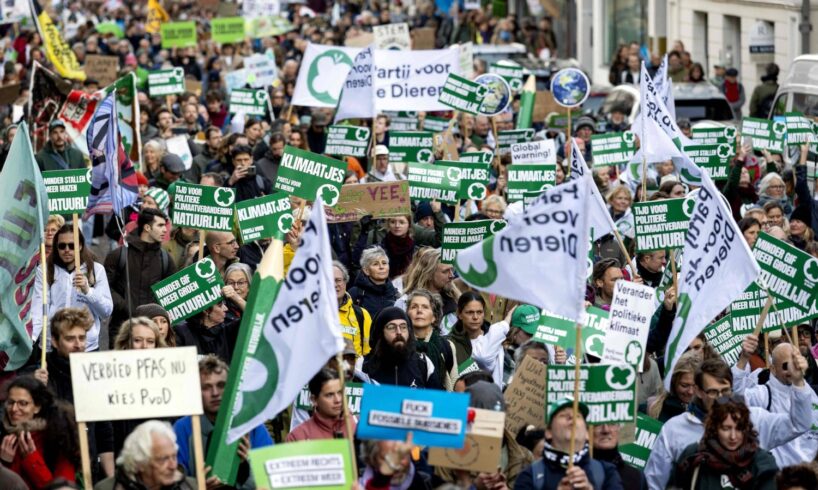
The U.N. estimated Tuesday that nations’ carbon-cutting pledges imply a far-from-sufficient 10% emissions cut by 2035, cautioning that it was unable to provide a robust global overview after most countries failed to submit their plans on time.
With just days to go before tense COP30 climate talks in Brazil, U.N. Climate Change provided an emissions calculation alongside its formal assessment of national 2035 pledges.
The extra calculation incorporated elements from major polluters such as China and the European Union, which have not submitted full official updated pledges.
U.N. Secretary-General Antonio Guterres said last week that slow action from nations meant it was “inevitable” that efforts to limit temperature rise to 1.5 degrees Celsius would fail in the short term, unleashing devastating impacts during a period of overshoot as countries worked to pull temperatures back down again by the end of the century.
U.N. climate chief Simon Stiell said the estimated 10% emissions cut suggested that “humanity is now clearly bending the emissions curve downwards for the first time, although still not nearly fast enough.”
The U.N.’s Intergovernmental Panel on Climate Change has said emissions must fall 60% by 2035, from 2019 levels, for a good chance of limiting global warming to 1.5 C above preindustrial levels — the more ambitious goal of the Paris climate deal.
“The science is equally clear that temperatures absolutely can and must be brought back down to 1.5 C as quickly as possible after any temporary overshoot, by substantially stepping up the pace on all fronts,” Stiell said in a statement.
The two-week COP30 climate negotiations in the Amazon, which start on Nov. 10, are tasked with galvanizing momentum in the face of a hostile United States, geopolitical tensions, economic concerns and fears that the most ambitious climate targets are already slipping out of reach.
The 2015 Paris climate accords aimed to limit global warming to well below 2 C above preindustrial (1850-1900) levels — and 1.5 C, if possible.
With average warming already around 1.4 C today, many scientists believe that the 1.5 C threshold will likely be breached before the end of this decade as humans continue to burn oil, gas, and coal.
But they stress that each fraction of a degree of temperature increase avoided is crucial to limit the danger.
If temperatures overshoot 1.5 C, experts say humanity would likely have to try to pull warming back down by using technologies to remove carbon from the atmosphere that are not yet operational at scale.
Under the Paris Agreement, each country is supposed to provide increasingly ambitious plans known as Nationally Determined Contributions (NDCs) every five years, with plans to 2035 due in this year.
The U.N. on Tuesday said just 64 of the nearly 200 parties to the Paris Agreement had submitted their NDCs by its end of September cut-off date for the official annual report.
As a result, Stiell said the document “provides quite a limited picture,” compelling the U.N. to attempt a more general calculation.
“This wider picture, though still incomplete, shows global emissions falling by around 10% by 2035,” he said.
The estimate included the U.S. submission made before the return of Donald Trump as U.S. president in January.
He has since announced he is pulling the United States out of the Paris deal for a second time, called climate change a “hoax,” and has moved to curb scientific study and data collection.
The estimate also incorporated a pledge by China, the world’s biggest polluter, to reduce emissions by 7% to 10% by 2035, its first absolute national target.
The European Union’s “statement of intent” to cut emissions between 66.25% and 72.5% by 2035 compared to 1990 levels was also taken into account.
It was announced in September as the 27-nation bloc grappled with internal disagreements about its climate ambitions.
“We are still in the race, but to ensure a livable planet for all 8 billion people today, we must urgently pick up the pace, at COP30 and every year thereafter,” Stiell said.





